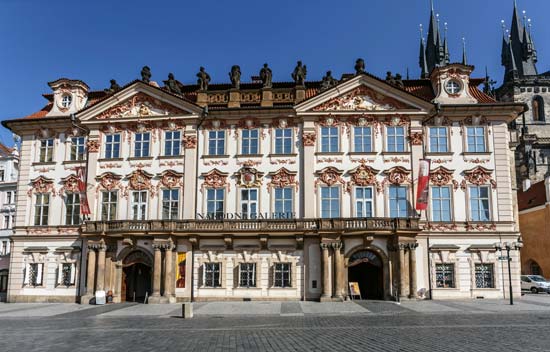Rococo
Rococo, also known as ‘late Baroque’, was an extreme, decorative development of Baroque architecture that emerged in the 18th century as a reaction against grandeur and symmetry. It was a more fluid and florid elaborate style, comprising ornate, asymmetric designs and pastel shades.
It originated in Paris, in response to the ponderous, strict Baroque architecture that had risen to prominence with buildings such as the Palace of Versailles and the official art of Louis XIV’s reign. It was soon adopted as a style across France and other countries such as Germany and Austria. However, by the end of the 18th century, Rococo had largely been replaced by the Neoclassical style.
Although there are many similarities between Rococo and Baroque architecture, the design approach tends to be more playful, light and with an exuberant use of curves. One of the principal differences between the styles is with regard to symmetry; Rococo emphasising the asymmetry of forms.
Rococo is also a more secular adaptation of Baroque, which is often more serious, with the intention of instilling awe in the faithful. Walls, ceilings and mouldings are decorated with numerous interlacings of curves and counter-curves based on the shapes of ‘C’ and ‘S’, along with shell forms and other naturalistic shapes.
The colours of Rococo are predominantly pale, such as light pastel, ivory white and gold, with frequent use of mirrors to enhance the sense of open space. French furniture from the period often displays curving forms, naturalistic shell and floral ornament, and playful use of gilt-bronze and porcelain decoration.
Some of the most notable buildings of the Rococo style are:
- Salon de Monsieur le Prince, Chantilly.
- Salons of the Hotel de Soubise, Paris.
- Amalienburg, Munich.
- Charlottenburg Palace, Berlin.
- Czapski Palace, Warsaw.
[edit] Related articles on Designing Buildings Wiki
Featured articles and news
Infrastructure that connect the physical and digital domains.
Harnessing robotics and AI in challenging environments
The key to nuclear decommissioning and fusion engineering.
BSRIA announces Lisa Ashworth as new CEO
Tasked with furthering BSRIA’s impressive growth ambitions.
Public buildings get half a million energy efficiency boost
£557 million to switch to cleaner heating and save on energy.
CIOB launches pre-election manifesto
Outlining potential future policies for the next government.
Grenfell Tower Inquiry announcement
Phase 2 hearings come to a close and the final report due in September.
Progress from Parts L, F and O: A whitepaper, one year on.
A replicated study to understand the opinion of practitioners.
ECA announces new president 2024
Electrical engineer and business leader Stuart Smith.
A distinct type of countryside that should be celebrated.
Should Part O be extended to existing buildings?
EAC brands heatwave adaptation a missed opportunity.
Definition of Statutory in workplace and facilities management
Established by IWFM, BESA, CIBSE and BSRIA.
Tackling the transition from traditional heating systems
59% lack the necessary information and confidence to switch.
The general election and the construction industry
As PM, Rishi Sunak announces July 4 date for an election.
Eco apprenticeships continue help grow green workforce
A year after being recognised at the King's coronation.
Permitted development rights for agricultural buildings
The changes coming into effect as of May 21, 2024.






















